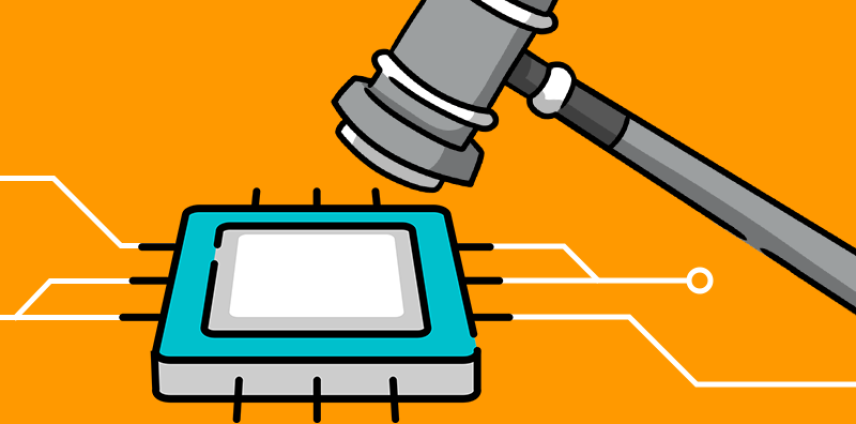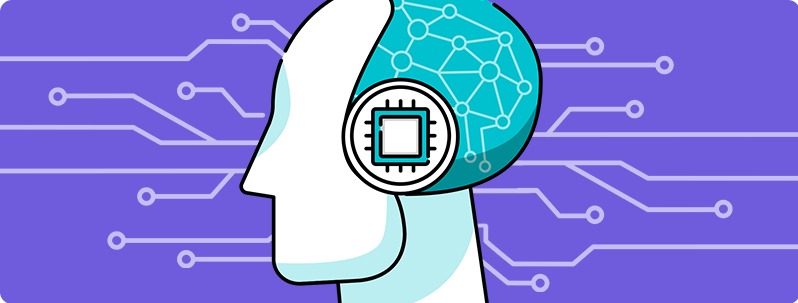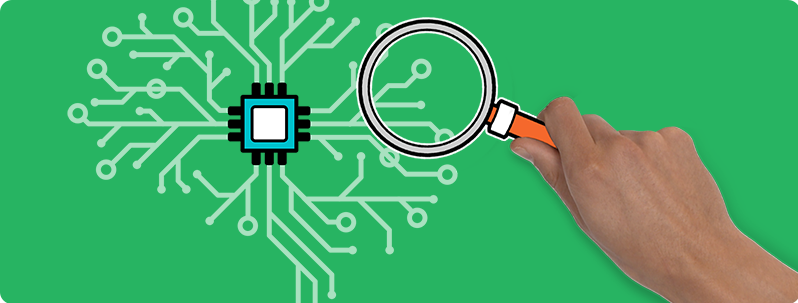Ethics of generative AI: Limits and responsibilities in the use of AI for content creation
Written by Maren Dinges | 7th November 2024

Table of Contents
Generative AI is changing the way businesses operate. Unlike humans, artificial intelligence can create any type of content in seconds. However, the generated content cannot always be used by companies without consideration. The use of generative AI immediately raises ethical questions.
It is often not immediately apparent whether AI-generated content violates rights such as copyright and privacy, or contains misinformation. As a result, the use of generative AI poses significant business risks for companies. But not using AI-generated content could be just as threatening.
Rather than abandoning generative AI, companies need to understand its limitations and consciously define its responsibilities.

What is Generative AI?
Generative AI is a branch of artificial intelligence. Its purpose is to create new (original) content and data. Here are some application areas:
- Text generation: Generative AI can write blog posts and other content, automatically translate text into other languages, optimize content for search engines, or generate quiz questions for e-learning courses.
- Image generation: Generative AI creates design sketches, generates architectural models, produces AR content, or automatically illustrates videos using images from pre-stored databases.
- Audio Generation: Generative AI voice generator content, creates sound effects, analyzes voice recordings for emotions, or automatically transcribes content.
All of these examples of generative AI can be found in simpleshow video maker. Generative AI writes scripts for your explainer videos, illustrates them according to the text, and creates a voice-over. Generative AI therefore offers opportunities for video processing first, as video is being created faster than ever before.

What are the Limits of Generative AI?
The limitations of generative AI lie primarily in the output it produces. Although generative AI is expected to create original content, it may only produce partial pieces. This puts companies at risk of violating ethical principles. Here are some examples:
- High dependence on training data: Generative AI can only generate content from the data it has. This means that the output – the generated content – depends on the data it is fed. Most of this data is training data. Unless it is a proprietary AI technology, you have no control over the training data. For example, it’s possible that the training data is unethical:
- Violate copyrights
- Illegally possessed by the AI provider (stolen data)
- Is unauthorized
- Reinforces existing prejudices
The use of such content could result in legal violations. This last point in particular could cause companies to lose public trust.
- Lack of transparency: The basis on which generative AI creates content is usually unclear. This is due to a lack of data transparency. While training data can be tracked, what about the millions of data points that users like you feed into the program every day? This could lead to generative AI using sensitive data in future content. If this is personal data or trade secrets, the use of such content could lead to data misuse.
- Biased content: Some AI models are inherently biased. For example, if a recruiting AI is trained only on a particular talent profile, it will only highlight talent that matches the data. For example, if the data indicates that only blond women under 30 are suitable for a job, this would violate anti-discrimination laws.

Creating Generative AI Content: The Ethical Responsibility Behind It
Closing off generative AI because of its limitations would be the wrong approach. Generative AI is here to stay, just as the Internet was here to stay. The question is not whether to use generative AI content, but how to use it ethically. To achieve this, AI content needs to be created in a regulated environment.
The European Union is currently working on the AI Act, which aims to regulate the use of AI in a way that respects fundamental rights. Until then, leading companies like IBM are taking matters into their own hands by deciding internally how to use AI responsibly. Here are some approaches:
- Define corporate policies: Corporate policies ensure that employees use generative AI correctly. After all, the output generated by AI is only indirectly responsible for unethical content. The input provided by the user directly influences the output. Therefore, internal training on the responsible use of generative AI is the foundation for creating ethically correct content.
- Use custom-trained AI: One exception is generative AI models that companies develop themselves. In this case, the AI is typically programmed to meet the company’s legal and compliance standards. For example, in simpleshow video maker, the data you enter into the story generator is only transmitted once. This ensures that your data is handled responsibly and securely, as it is not used to improve the model or for further training. In addition, the system does not allow the transmission of personal data. This ensures the highest security standards.
- Let humans review the output: A responsible approach to generative AI is most successful when the AI is only part of the workflow. This means that a human should review the AI’s output for bias, ethical correctness, and tone. Part of this review should include verifying the factual accuracy of the content. This will help ensure that your content contains only accurate information.
Conclusion: Creating Ethical Content with Generative AI — It’s Possible!
For generative AI content to be ethically correct, people must learn to use AI responsibly. Usage guidelines and other regulations provide guidance. But more importantly, it is important to always check the output for accuracy. That way, companies maintain control over what content they do and don’t publish.
After all, part of the ethical use of these technologies is to review them with an empathetic and watchful eye. You can try out how generative AI supports content creation right now in simpleshow video maker. It creates text, images and audio tracks for you.


